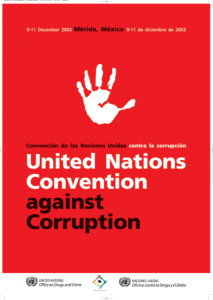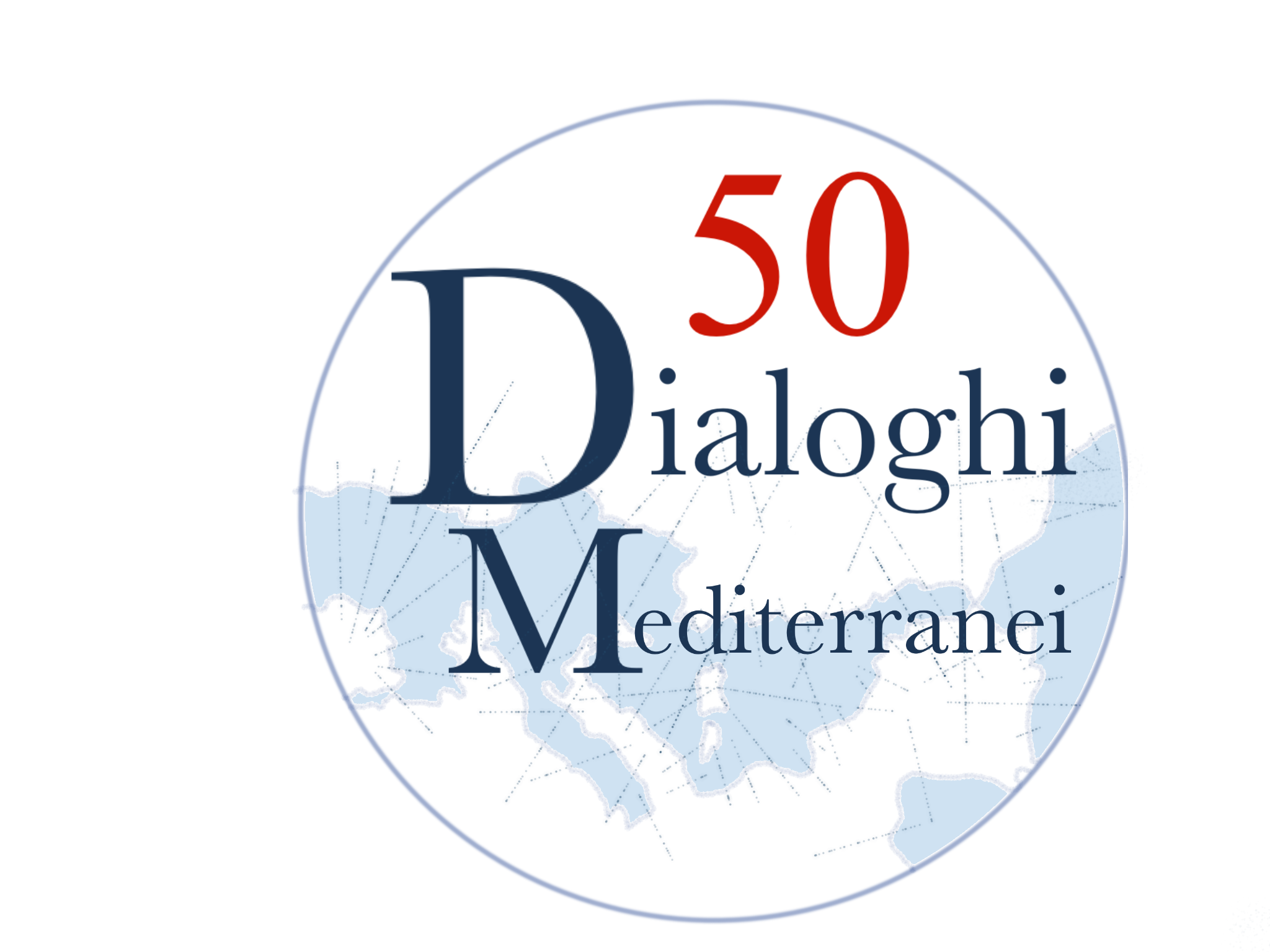Since human rights are indivisible and interdependent, their relationship with corruption leads inevitably to negative consequences. Whenever corruption violates a human right, it simultaneously produces a domino effect among other rights.
The question that arises from this relationship is when and how acts of corruption are linked to the violations of human rights. Gebeye argues that the literature in this respect is scant[1]; debates on corruption have mainly been centred on economic issues. Indeed, as Gathii pinpoints, the primary impetus of the anti-corruption agenda, which was firstly sponsored by the Bretton Woods institutions, and especially by the World Bank[2] at the end of 80s onwards, was established to guarantee economic reforms as a prerequisite for the success of a good governance.
Corruption known to have corrosive effects on human affairs prompted debates on the protection of human rights in the late 90s. In many instances United Nations Human Rights mechanisms and regional organisations strategized with an aim of providing support necessary for states to comply with their human rights obligations, for example, in the event that corruption takes control of the public resources, the obligations of a state to provide public services, which are crucial for the realisation of the rights recognised in the Article 2 of the International Covenant on Economic, Social and Cultural Rights (UCESCR) would inevitably fail. In this regard, the Office of the High Commissioner for Human Rights (OHCHR) published a booklet on Good Governance Practices for the Protection of Human Rights in 2007 after holding a conference on anti-corruption, good governance and human rights in Warsaw, Poland, 2006[3]. The purpose of the publication was designed to provide a guideline on how governance reforms can contribute to the reinforcement and protection of human rights. In doing so, mechanisms of accountability and transparency were seen as some of the reform initiatives that would guarantee everyone access to services without discrimination, and encourage public participation and national and local organizations in decision-making processes [4]. Furthermore, another significant initiative was the resolution 51/59, in which the General Assembly adopted the International Code of Conduct for Public Officials, and recommended it to the Member States[5].
Although discourses on good governance and public authority’s conduct have raised awareness on the implementation of human rights principles through state intervention, and that is a paramount for the safeguard of human dignity, the International Council on Human Rights Policy argues in its report 2009, that still «very little has been done to describe in precise terms what the links are between acts of corruption and violations of human rights»[6]. These acts of corruption have been identified and provided by the United Nations Convention against Corruption, 2003 (UNCAC). The latter, which entered into force in 2005, provides the most exhaustive list of corruption practices. It obliges State Parties to adopt legislative measures to prevent and punish these illegal crimes, especially measures against bribery[7], which is considered to be the most common and widespread crime. In addition, State Parties are encouraged to prohibit trading in influence, abuse of function[8] and illicit enrichment[9], «but there is no mandatory requirement in the UNCAC to prohibit such behaviour»[10]. Other acts of corruption, which are included in the list, are laundering of the proceeds of corruption, concealment and obstruction of justice[11]. Given all that, however, the misconduct of the public authorities, who hold a legislative, administrative, or judicial position, is the main point from which to explore and understand the connection between corruption and human rights. Due to the «misuse of entrusted power for private gain», as defined by Transparency International (TI), and widely used by everyone else, corrupt public and private officials are seen as the main cause for the existence of corruption.
Corruption is classified as grand, petty, remote, political and administrative, according to the sector in which public officials illegally act[12]. Some of these categories such as petty and grand corruption and their negative impact on the enjoyment of human rights will be explored in the first part of the chapter, while anticorruption measures and observation on judicial corruption as «the biggest threat» will be briefly examined in the second part.
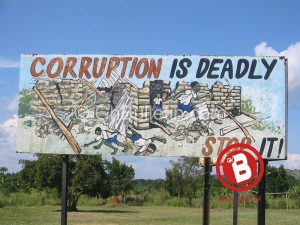 Corrupt public officials and their negative effects on human rights
Corrupt public officials and their negative effects on human rights
From a human rights perspective, the legal definition of corruption is considered to be the most appropriate definition to establish when an act of corruption violates or leads to the violation of human rights.
The legal definition in comparison with others is based on a list of specific criminal acts that are linked to the «notion of misuse of entrusted power». This list is compiled by the UNCAC and is also adopted by other conventions. Each of them shows differences by drawing a neat distinction between corruption and acts of corruption. What emerges from these different approaches taken by the international conventions is that the term of corruption does not refer to a defined “corruption act”, corruption per se’ is not criminalised as such. The general tendency is instead to keep corruption and acts of corruption separated. The term corruption within a legal context has the function of grouping under its name specific criminal acts [13] as mentioned above.
Scholars and professional lawyers such as Matthew Murray[14] and Andrew Spalding[15] have advanced a suggestion in their joined research called Freedom from Official Corruption as Human Right, 2015[16]. They argue that international conventions should create a new human right of freedom from “official corruption” (the term ‘official corruption’ is interchangeable with the term ‘corruption’ in Murray and Spalding’s research). The benefit of such right lies in the idea that “elevating corruption” or official corruption “to a human rights violation” would change the way corruption is treated within international and domestic law. It would acquire a “normative weight” and help with the prevention of the unethical conduct of public authorities, essential in promoting good governance and the upholding of human rights. Furthermore, framing corruption or official corruption as human rights violation has the potential to create a framework for a better overall social and economic environment in which the most vulnerable are no longer victimized. The global expansion and growth of new jobs and economic opportunities without a such decree then leave citizens open to the likelihood of continued exploitation, a case in question, which occurred in Tunisia in 2010, is that of a young entrepreneur called Mohamed Bouazizi. He had the chance to start his own business as fruit and vegetable vendor. Despite the financial opportunities, Bouazizi was forced to pay bribes to the local police. After a long period of pressure, he committed self – immolation in front of the police station of his town as a means of protest and freedom from petty corruption.
The relevance of Bouazizi’s story for Murray and Spalding is that it represents «the highest cost of corruption today»: the destruction of people’s hopes to establish their own business and security for themselves and family. Therefore, «the human rights law should be an instrument of such freedom» in order to guarantee protection to the victims from petty and grand corruption. Stories like that of Bouazazi occur everywhere in the world. Corrupt public officials do affect peoples’ lives and deprive them of their human rights.
As reported by the Corruption Index 2014, which is annually provided by Transparency International, the highest level of public sector corruption around the world[17] is present in Africa, Americas, South and Central Asia. People living in these countries are more likely to be subjected to a wide range of violation of human rights. This is a well-known fact that public authorities abuse their powers which adversely and predominately impact people of low class and economic status.
Human rights violations manifest in various forms, and all forms are important to understand and get full grasp on the way corruption works, functions and influences the lives of people. The latter have very little defence against it and therefore they are compelled to accept it as part and parcel of their daily living.
People «cannot go to any public organisation or office today and get the service which they are supposed to get without either paying a bribe or bringing influence by way of recommendations or references from VIPs», as stated by the former Central Vigilance Commissioner Vittal[18]in relations to the situation existing India. India is just an example among other developing countries in which people experience similar mistreatment.
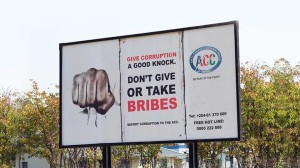 Bribery is a daily ritual for many citizens, and it is used either by citizens or public authorities to obtain benefits of any sort. When low and middle level public authorities such police officers, doctors, headmasters extort bribes from citizens, this is considered to be petty corruption. In this regard, Laurence Cockcroft attempts to analyse the factors that are supporting this type of corruption[19]. Therefore, it begs the question: What are the mechanisms that coerce the victims of bribery to submit to such injustice? Cockcroft answers the question by illustrating the story of a poor family living in a developing country in order to demonstrate the way these mechanisms operate. He describes a «short story about a day in the life of Jami Ali from Tanzania».
Bribery is a daily ritual for many citizens, and it is used either by citizens or public authorities to obtain benefits of any sort. When low and middle level public authorities such police officers, doctors, headmasters extort bribes from citizens, this is considered to be petty corruption. In this regard, Laurence Cockcroft attempts to analyse the factors that are supporting this type of corruption[19]. Therefore, it begs the question: What are the mechanisms that coerce the victims of bribery to submit to such injustice? Cockcroft answers the question by illustrating the story of a poor family living in a developing country in order to demonstrate the way these mechanisms operate. He describes a «short story about a day in the life of Jami Ali from Tanzania».
The story of Jami Ali’s is the story of a man whose rights and those of his family have been violated; typical for billions of poor people who live without rights that guarantee access to social resources and protection from public authority abuse. Jami Ali, who is unable to exercise his basic rights, has to deal with key people within his community to access to social services.
An unfortunate incident of low-level corruption involved Jami Ali wanting his daughter to attend a certain school. Once they arrived at the school, and after waiting an hour to see the headmistress, Ali was told that he would have to pay £ 10 in order for his daughter to attend. This issue was just one of many issues of corruption bribery that Jami Ali and his family had to deal with.
Cockcroft argues that this type of corruption derives from the low and middle level corrupt officials, who are identified as “placemen”, and occupy strategic positions within public sectors. These placemen together with the complicity of high level corrupt public authorities who are classified within the category of grand corruption, construct a robust and well protected network; a network that facilitates the growth of private profit, privileges, power and favouritism. Such an established system which can see to benefit placement including those high ranking means that a dismantling of such a system will come at a great cost to many. This view is exactly what emerges in a report on corruption in Cambodia:
«No one with the patronage of the state is punished, whether for massive pillaging or petty thief. In fact, those most at risk are individuals and organizations that dare to resist corruption. Most Cambodians regard resistance as a futile act» (Kumar, 2011: 41).
Cases of human rights abuse such those of Jami Ali and Bouazizi are quite straightforward: the act of corruption in the form of bribery is used directly to violate the rights of people. In this context, therefore, it is not difficult to identify when and how a corrupt practice violates the human right. Issues arise when human rights violations cannot be legally demonstrated when the offence is hidden or manipulated. Since the evidence is still an important tool to prosecute, most of the time corrupt police officers, judges and other law enforcement officials escape punishments. As Benson observes, the public officials «are in position to sell the right not to be arrested, charged or convicted»[20]. In addition, «discretionary power” becomes a crucial instrument of protection, favours and in particular a “fertile ground for abuse” in which corrupt public officials exploit their governmental responsibilities for personal gains. By doing so they erode public trust in government and prevent the responsibility of a state from complying with the application of human rights and equal distribution of public services to all. When “bribery is inescapable in governmental decision-making», as it happens in many developing countries, the anti-corruption strategies cover an important role in fighting against corruption in collaboration with civil society, and with the promotion of a culture based on honesty and integrity.
Anti-corruption measures and corruption in the judiciary
«Each State Party shall, in accordance with the fundamental principles of its legal system, develop and implement or maintain effective, coordinated anti- corruption policies that promote the participation of society and reflect the principles of the rule of law, proper management of public and property, integrity, transparency and accountability» [21].
 As stated above in the UNCAC, Art. 5 (1), preventive measures play an important role in guiding States to comply with their international obligations. The measures consist of creating avenues for a state to protect and ensure the implementation of human rights to its respective citizens against corruption. This is possible not only through a legal framework based on the prosecution of criminal acts related to corruption, but also through the adoption of a human rights approach to anti-corruption. The latter provides a set of values based on the promotional policies of transparency, accountability, freedom of expression, access to information, freedom of press and an independent judiciary[22]. These factors constitute the foundation for the human rights approach to create the conditions to place the victims of corruption and their human rights at the centre of anti-corruption effort[23]. The implementation of human rights, however, must rely on a «conducive and enabling environment» such as the judiciary, national human rights institutions and ombudsmen. These together with international anti-corruption agencies are recognized as effective anti-corruption institutes. In this contest, the roles of the civil society, human rights defenders, media and whistle-blowers are also relevant on to monitor and assess the accountability and transparency of governmental institutes and anti-corruption institutes. More importantly, the action of reporting wrongdoing of public authorities should be guaranteed, especially by the judiciary, whose main duty and responsibility is to provide justice to people when «their individuals’ rights have been violated». This can be made possible when the judiciary assures the effectiveness and efficiency of the administration of justice that involves principles such as the right to equality and non-discrimination, the right to a fair trial and effective remedy, and the right of the parties involved[24]. These rights are vital for the creation of the rule of law in which every citizen is subjected. As Arvidsson and Folkesson argue «the foundation of a well-functioning society is based on the rule of law and many of the core principles in the rule of law depend on the correct behaviour of the judiciary»[25]. According to the UN, 2004,
As stated above in the UNCAC, Art. 5 (1), preventive measures play an important role in guiding States to comply with their international obligations. The measures consist of creating avenues for a state to protect and ensure the implementation of human rights to its respective citizens against corruption. This is possible not only through a legal framework based on the prosecution of criminal acts related to corruption, but also through the adoption of a human rights approach to anti-corruption. The latter provides a set of values based on the promotional policies of transparency, accountability, freedom of expression, access to information, freedom of press and an independent judiciary[22]. These factors constitute the foundation for the human rights approach to create the conditions to place the victims of corruption and their human rights at the centre of anti-corruption effort[23]. The implementation of human rights, however, must rely on a «conducive and enabling environment» such as the judiciary, national human rights institutions and ombudsmen. These together with international anti-corruption agencies are recognized as effective anti-corruption institutes. In this contest, the roles of the civil society, human rights defenders, media and whistle-blowers are also relevant on to monitor and assess the accountability and transparency of governmental institutes and anti-corruption institutes. More importantly, the action of reporting wrongdoing of public authorities should be guaranteed, especially by the judiciary, whose main duty and responsibility is to provide justice to people when «their individuals’ rights have been violated». This can be made possible when the judiciary assures the effectiveness and efficiency of the administration of justice that involves principles such as the right to equality and non-discrimination, the right to a fair trial and effective remedy, and the right of the parties involved[24]. These rights are vital for the creation of the rule of law in which every citizen is subjected. As Arvidsson and Folkesson argue «the foundation of a well-functioning society is based on the rule of law and many of the core principles in the rule of law depend on the correct behaviour of the judiciary»[25]. According to the UN, 2004,
«The ‘rule of law’ is a concept at the very heart of the Organization’s mission. It refers to a principle of governance in which all persons, institutions and entities, public and private, including the State itself, are accountable to laws that are publicly promulgated, equally enforced and independently adjudicated, and which are consistent with international human rights norms and standards. It requires, as well, measures to ensure adherence to the principles of supremacy of law, equality before the law, accountability to the law, fairness in the application of the law, separation of powers, participation in decision-making, legal certainty, avoidance of arbitrariness and procedural and legal transparency»[26].
The judiciary occupies, thus, an important role in accomplishing the implementation of the human rights in order to guarantee access to justice for all and the «well-being of society at large». All this, however, is possible only if the judiciary operates in transparency and accountability, as this is essential to «strengthen integrity and prevent opportunities for corruption among members of the judiciary» as stated in the UNCAC, Article 11. Lack of integrity and honesty would promote lack of respect for the law and facilitate the destabilization of the entire society. Therefore, within this contest, corruption in the judiciary is seen as «the biggest threats against the protection of human rights».
Transparency International in its report on Combating Corruption in Judiciary system, 2007, defines the judicial corruption as «acts or omissions that constitute the use of public authority for the private benefit of court personnel, and result in the improper and unfair delivery of judicial decisions. Such acts and omissions include bribery, extortion, intimidation, influence peddling and the abuse of court procedures for personal gain»[27].
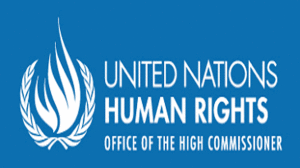 The reputation of the judiciary as a place of impartiality and integrity will be destroyed by the presence of corrupt judges; and as said in the previous paragraph, as corrupt judges belong to the category of high ranking placemen, they have the power to manipulate the law, and easily hide their misconduct, in particular preserve a ‘systematic corrupt behaviour’. In this context, the disaffection of citizens from the judiciary is one of the major negative impact. People lose confidence in it. Especially when bribery is required as a means of accessing justice, vulnerable people would be automatically excluded and marginalized.
The reputation of the judiciary as a place of impartiality and integrity will be destroyed by the presence of corrupt judges; and as said in the previous paragraph, as corrupt judges belong to the category of high ranking placemen, they have the power to manipulate the law, and easily hide their misconduct, in particular preserve a ‘systematic corrupt behaviour’. In this context, the disaffection of citizens from the judiciary is one of the major negative impact. People lose confidence in it. Especially when bribery is required as a means of accessing justice, vulnerable people would be automatically excluded and marginalized.
In response to the growth of corrupt judges, a group of Chief justices decided to gather and write a set of standard principles related to the conduct of the judges and their accountability. The document is recognised as The Bangalore Principles on Judicial Conduct, 2002. The Principles were adopted by the UN Economic and Social Council (ECOSOC) in 2005[28]. In a resolution 2007/22 ECOSOC recognised it as complementary to the UN Basic principles on the Independence of the Judiciary (199) and invited the State Parties to encourage their judiciaries to take into account the Bangalore Principles[29].
One of the most obvious negative consequences of corruption within the judiciary is the difficulty to prosecute public officials for their human rights violations when they are protected by a corrupt system that encourages impunity. In this context, individuals and organizations, which try to resist corruption, can easily be accused and arrested with false cases or be murdered. Especially when corruption is pervasive and well spread, frustrations and anger increase from victims of corruption, who see little hopes for their rights to be ratified. In this scenario, as many scholars have pointed out, people would be reluctant in the success of anticorruption measures when the legal system is compromised by corruption. The key factor, as Kumar argues, would be to promote legal and judicial reform from a human rights perspective. In this way, implementing human rights policies within governmental institution would lead to a vision of a social–legal life based on the safeguard of the individual’s human rights.
Dialoghi Mediterranei, n. 45, settembre 2020
[*] Abstract
Il contributo costituisce una parte del lavoro di ricerca e riflessione condotta sulla letteratura, dati e documenti sulla corruzione e diritti umani, con l’obiettivo di approfondire l’indagine e diffondere la conoscenza ad un pubblico più vasto. La corruzione è molto estesa a livello internazionale e vede il coinvolgimento di molte autorità pubbliche con il sostegno anche di normali ed insospettabili cittadini,, tanto da poter parlare di un sistema gerarchico piramidale che scientificamente perpetua la negazione dei diritti. Inoltre, nell’ultima parte del saggio, si richiama l’attenzione sul ruolo della magistratura, che è considerata un’importante istituzione anti-corruzione tra le altre agenzie a garanzia dell’attuazione dei diritti umani all’interno della società. Tuttavia, nonostante ciò, la corruzione erode la fiducia nella magistratura e mette a rischio il suo ruolo principale di custode dello Stato di diritto e più ampiamente tutore dei diritti umani.
Note
[1] Berihun Adugna Gebeye, 2012, Corruption and Human Rights: Exploring the relationships. [Online] hrhw working papers. Available at: http://www.du.edu/korbel/hrhw/workingpapers/2012/70-gebeye-2012.pdf. [Accessed 20July 2015]. See, the etymology of the word at the Oxford dictionaries online and online etymology Dictionary:http://www.oxforddictionaries.com/ http://www.etymonline.com/ [Accessed 20 July 2015].
[2] James Thuo Gathii,2009, Defining the relationship between Human Rights and Corruption, [pdf] Available at: https://www.law.upenn.edu/journals/jil/articles/volume31/issue1/Gathii31U.Pa.J.Int’lL.125(2009).pdf.: 127.
[3] The Human Rights case against Corruption. Available at: http://www.ohchr.org/EN/Issues/Development/GoodGovernance/Pages/AntiCorruption.aspxp: 6. [Accessed 15 July 2015].
[4] Good governance Practice for the protection of human Rights, 2007. Available at: http://www.ohchr.org/Documents/Publications/GoodGovernance.pdf. [Accessed 15 July 2015]
[5]A/Res/51/59, 82nd plenary meeting, 12 December 1996. Available at: http://www.un.org/documents/ga/res/51/a51r059.htm
[6] International Council on Human Rights Policy, 2009, Corruption and Human Rights: making the Connection. [pdf] Geneva: The International Council on Human Rights Policy. Available at: http://www.u4.no/recommended-reading/corruption-and-human-rights-making-the-connection/downloadasset/2329: 23. [Accessed 15 July 2015].
[7]United Nations Convention against Corruption (UNCAC), 2003, available at: https://www.unodc.org/documents/brussels/UN_Convention_Against_Corruption.pdf. Chapter III, Criminalization and law enforcement: Article 15.
[8] UNCAC, Articles 18 and 20.
[9] Ibid. Article 20.
[10] Amélie Arvisson and Amelie Folkersson, 2010, Corruption in the Judiciary: Balancing accountability and Judicial Independence. [Online] academia.edu. Available at: http://www.academia.edu/5046438/Corruption_in_the_Judiciary_Balancing_Accountability_and_Judicial_Independence: 15. [Accessed 5 August 2015]
[11] UNCAC, Articles 23- 25.
[12] Transparency International, How do you define corruption? see, FAQs on corruption, available at: https://www.transparency.org/whoweare/organisation/faqs_on_corruption/9/
[13] See, supra, note 9: 16.
[14] Matthew Murray is, an attorney on international anti-corruption since 1998 and also a US Deputy Assistant Secretary of Commerce for Europe, Middle East and Africa.
[15]Andrew Spalding is Assistant professor at the University of Richmond School of Law, and Instructor at the international Anti-Corruption Academy in Vienna.
[16] Matthew Murray and Andrew Spalding, 2015, Freedom from Official Corruption as Human Rights. [online] Brookings. Available at: http://www.brookings.edu/research/papers/2015/01/27-freedom-corruption-human-right-murray-spalding. [Accessed 17 July 2015].
[17] Corruption Perceptions Index-2014 –Transparency International. Available at: http://cpi.transparency.org/ [Accessed 5 August 2015]
[18] Paravala, V., 2010, Religions, Ethics and Attitudes towards Corruption: A study of Perspective in India. [pdf ] Available at: www.birmingham.ac.uk/Documents/college-social-sciences/government-society/rad/workingpapers/wp-53.pdf [Accessed 30 May 2015].
[19] Laurence Cokcroft, 1998, Working Paper, Corruption and Human Rights: A Crucial Link. Available at: http://resources.transparency.bg/download.html?id=229.
[20] Bruce L. Benson, 1988, Corruption in law enforcement: one consequence of “The tragedy of the commons” arising with public allocation. [online] ScienceDirect. Available at: www.sciencedirect.com/science/article/pii/0144818888900166 [Accessed 5 August 2015].
[21] UNCAC, Chapter II, Preventive measures, Article 5, s. 1, Preventive anti-corruption policies and practices.
[22] See, supra note 6: 5.
[23] C. R. Kumar, 2011, Corruption and Human Rights in India. Comparative Perspectives on Transparency and Good Governance. New Delhi, Oxford University Press: 9.
[24] See, supra note 9: 35.
[25] See, supra note, 13: 8.
[26] United Nations, The rule of law and transitional justice in conflict and post-conflict societies S/2004/616, III Articulating a common language of justice for the United Nations, section 6: 4.
[27] Transparency International, 2007, Global Corruption Report 2007: Corruption and Judicial Systems, [online] Berlin: Transparency International. Available at: http://www.transparency.org/whatwedo/pub/global_corruption_report_2007_corruption_and_judicial_systems [Accessed 28 June 2015]: 34.
[28] Transparency International, 2007, Combating Corruption in the Judicial System, Advocacy Toolkit. [pdf]. Available at : http://siteresources.worldbank.org/INTLAWJUSTINST/Resources/Judiciary_Advocacy_ToolKit.pdf: 21.
[29] See, supra note 9: 37.
______________________________________________________________
Paola Barbuzzi, laureatasi in filosofia all’Università di Bologna, dopo qualche anno di insegnamento di L2 a donne migranti, si è trasferita a Londra per frequentare dei master sui diritti umani e la medicalizzazione del corpo femminile. Stabilitasi da oltre un decennio nella capitale britannica, lavora con `NGOs sulla difesa dei diritti umani e la loro violazione, in modo specifico, sulle donne.
______________________________________________________________



